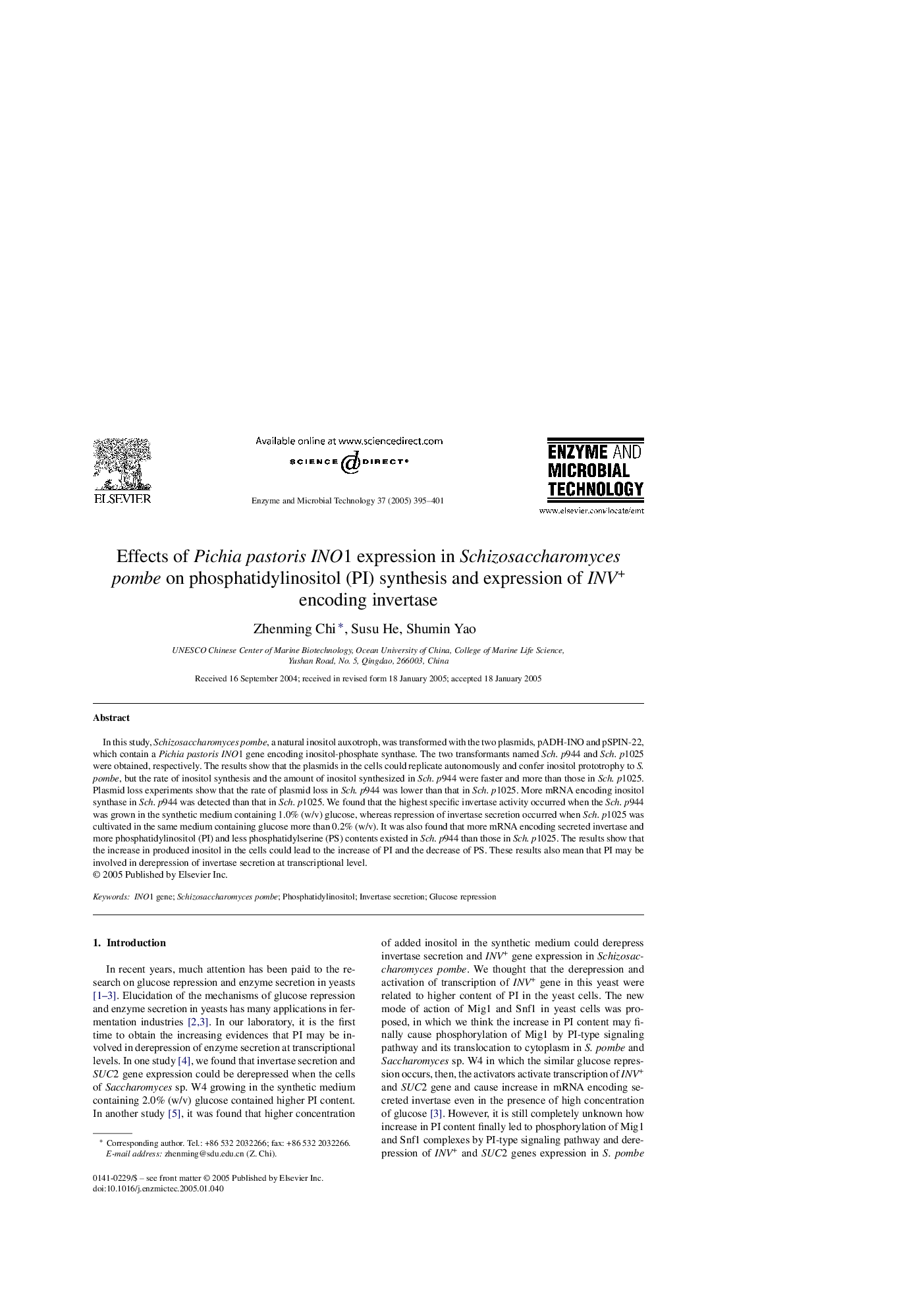| Article ID | Journal | Published Year | Pages | File Type |
|---|---|---|---|---|
| 10233143 | Enzyme and Microbial Technology | 2005 | 7 Pages |
Abstract
In this study, Schizosaccharomyces pombe, a natural inositol auxotroph, was transformed with the two plasmids, pADH-INO and pSPIN-22, which contain a Pichia pastoris INO1 gene encoding inositol-phosphate synthase. The two transformants named Sch. p944 and Sch. p1025 were obtained, respectively. The results show that the plasmids in the cells could replicate autonomously and confer inositol prototrophy to S. pombe, but the rate of inositol synthesis and the amount of inositol synthesized in Sch. p944 were faster and more than those in Sch. p1025. Plasmid loss experiments show that the rate of plasmid loss in Sch. p944 was lower than that in Sch. p1025. More mRNA encoding inositol synthase in Sch. p944 was detected than that in Sch. p1025. We found that the highest specific invertase activity occurred when the Sch. p944 was grown in the synthetic medium containing 1.0% (w/v) glucose, whereas repression of invertase secretion occurred when Sch. p1025 was cultivated in the same medium containing glucose more than 0.2% (w/v). It was also found that more mRNA encoding secreted invertase and more phosphatidylinositol (PI) and less phosphatidylserine (PS) contents existed in Sch. p944 than those in Sch. p1025. The results show that the increase in produced inositol in the cells could lead to the increase of PI and the decrease of PS. These results also mean that PI may be involved in derepression of invertase secretion at transcriptional level.
Related Topics
Physical Sciences and Engineering
Chemical Engineering
Bioengineering
Authors
Zhenming Chi, Susu He, Shumin Yao,
